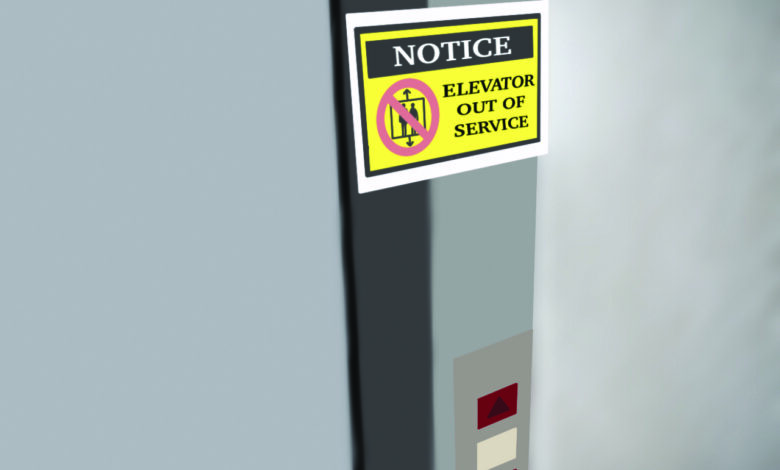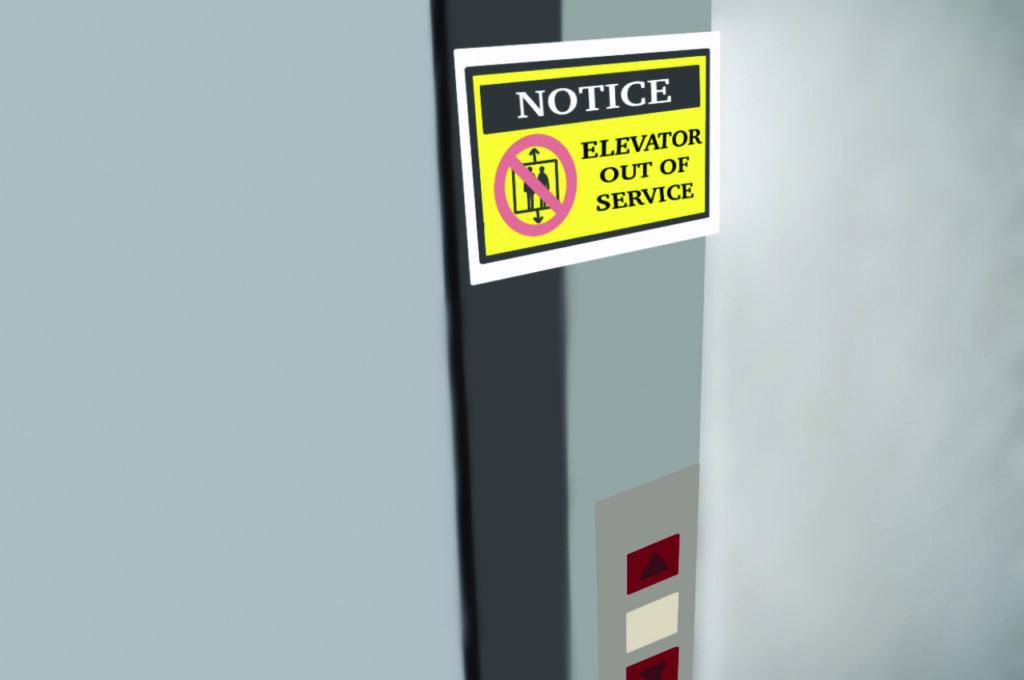
Elevator issues spark accessibility concerns
By Bridget Gum-Egan
The week before spring break, I was sitting in my class on the top floor of the Fine Arts building and I needed to use the restroom. As per usual, I dropped my things off and was about to go downstairs to the gender inclusive/accessible bathroom on the first floor, which is the only bathroom that is wheelchair accessible in the building, when another student came in panting. She told the class that she and about five other students had just gotten trapped in the elevator. Instantly, panic set in.
Most of my classes have been in the Fine Arts building. In that time, the elevator has broken around 10 times with me in it, stranding me on the bottom or top floor. I have missed class, been unable to use the restroom or leave the building, had to change entire classrooms and, in extreme cases like a few weeks ago, had to be carried down the stairs. However, I am not the only one affected by this problem, nor are the elevator problems isolated to the Fine Arts building.
Marina Jean-Baptiste, a sophomore behavioral neuroscience major, also relies on the elevators, as she frequently uses a wheelchair to navigate campus and has limited mobility even when she is able to walk. Jean-Baptiste experienced issues with both the elevators in the science and Fine Arts buildings a few times. She once tried going up the stairs, which caused her so much pain and fatigue that since then, she skipped class or other activities when the elevators weren’t working.
“It’s a little disheartening that the elevators aren’t something that I know for sure are going to work all the time,” said Jean-Baptiste. “Sometimes it feels like a gamble going to class or to the radio station, because I don’t know if I’ll actually be able to access it.”
Jean-Baptiste was grateful that she has not gotten trapped on upper levels of buildings and she hasn’t been informed of any protocol for that situation. She believed that something as simple as doing routine checks of the elevator may solve some of these issues.
“Rider is big on community, so it would be great if they would consider disabled people with everything from elevators to campus events, so all students can have access to campus life,” said Jean-Baptiste.

By Angelina Fierro
Having been stuck on upper floors of buildings, in my experience the plan is to use the fire evacuation chair, which is regulation, and that public safety officers are supposed to be trained on how to use these chairs.
To clarify, I don’t want to point the finger at Public Safety or facilities. Both of these groups of people do everything they can to help me in these situations and are very good at fixing the problem, at least temporarily. They have also shown equal levels of frustration and empathy when I do become stuck because of some malfunction.
According to Michael Reca, vice president of university operations, over this past winter break facilities identified the problem in the elevator which involved the control system. They have since ordered the parts and submitted all the necessary paperwork.
“Unfortunately, we have to shut the elevator down for four to six weeks to completely overhaul the controls and systems to make the required repairs,” said Reca. “That work will begin at the end of this semester in mid-May and be completed by mid-summer.”
In the meantime, facilities said that they are monitoring the performance of the elevator weekly and when requested, for instance, when it breaks.
But how many people need to get stuck in the elevator? How many times does it need to break? How many classes can I or other students miss? How many classes can be changed to another floor or building? What needs to happen for Rider to finally take accessibility seriously and actually be the diverse and inclusive school it claims to be?



